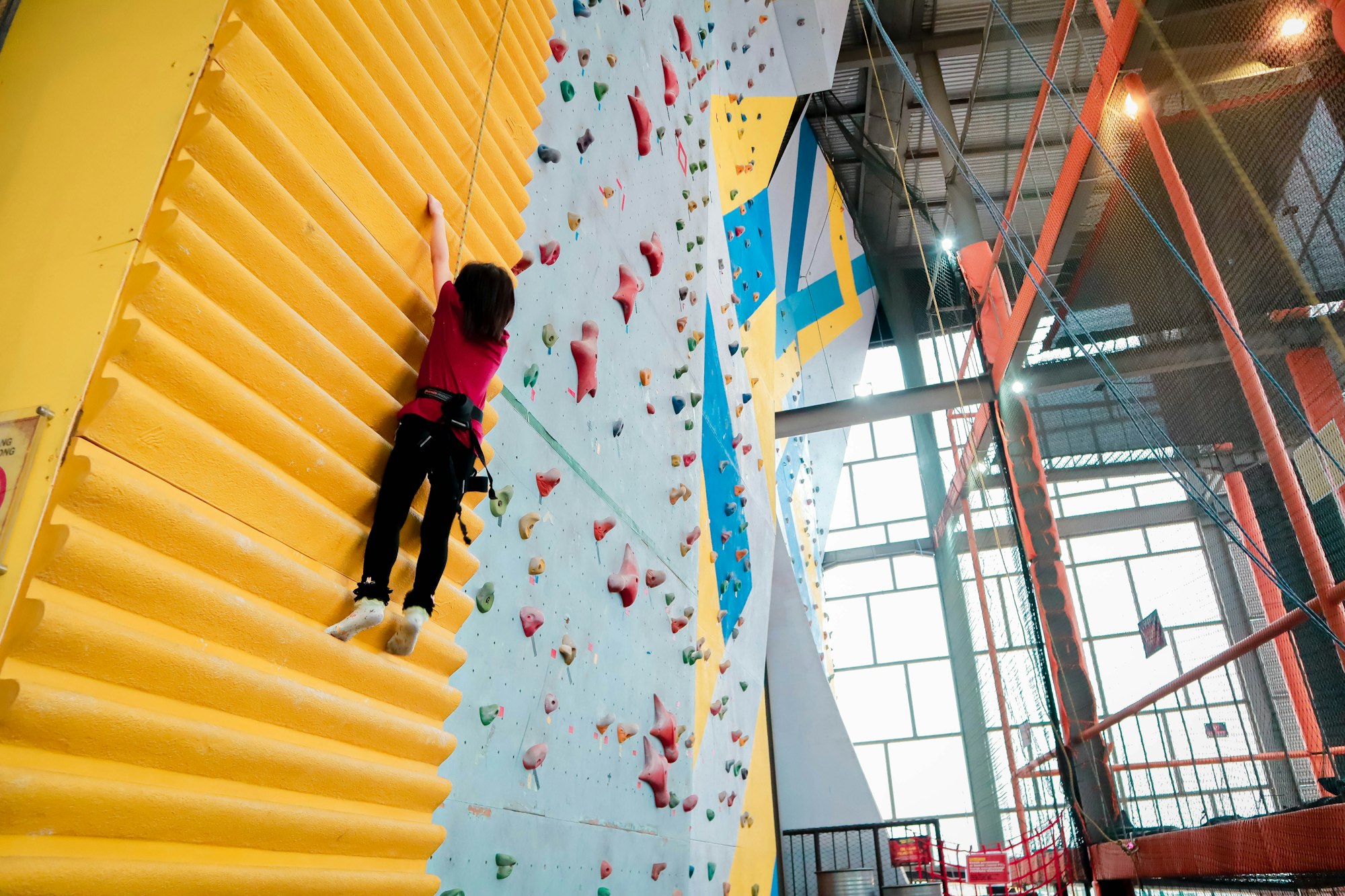From the moment parents start pondering how to choose the right sport activity child, a subtle cascade of questions begins to surface. Will my son thrive in a team setting, or does my daughter flourish best one-on-one? Is physical activity merely about burning energy, or does it shape critical building blocks for lifelong well-being? Decoding these uncertainties can feel like a puzzle, where every piece represents developmental needs, scheduling chaos, and a desire for genuine happiness. At the intersection of science, daily life, and emotional nuance, the path to choose the right sport activity child becomes a balancing act—between enjoyment and commitment, between structure and spontaneity. A trajectory, not a sprint. This discussion explores: the physiological and psychological advantages of well-matched sports, the interplay of interests and motivation, the nuances of personality and social skills, and, not least, the reality checks of family logistics. Evidence-based, realistic, and always on your side.
The Importance of Sport: More Than Muscles and Movement
Physical activity is a transformative force during childhood—shaping not only lean muscles and resilient bones but supporting neurodevelopmental processes, hormone regulation, and emotional health. You might be familiar with the recommendations: at least 60 minutes of moderate to vigorous activity per day for school-aged children, endorsed by leading pediatric associations. Yet, the impact of choose the right sport activity child extends far beyond numbers. Sporting engagement—especially when aligned with your child’s age and temperament—releases endorphins (those famous “feel-good” neurotransmitters). This boosts mood, strengthens neuronal pathways tied to focus and memory, and establishes a powerful feedback loop for academic success.
But let’s not overlook immunity: studies show that regular, structured movement enhances the function of white blood cells—first-line defenders against infection. Meanwhile, evidence links participation in enjoyable physical activities to lower rates of childhood obesity, metabolic syndrome, and even symptoms of anxiety and depression. What does this all mean practically? That aiming to choose the right sport activity child is not just about “something to do after school.” It’s about constructing a healthy foundation that impacts health well into adulthood, while cultivating perseverance, teamwork, and coping strategies.
Matching Sport to the Child: Age, Ability, and Interests
Understanding Age-Specific Needs
The developmental leap between a preschooler and a pre-teen can be astounding. For parents, choose the right sport activity child begins with an honest look at maturation—physically and emotionally. Preschoolers (ages 3–5), brimming with energy but limited by coordination and attention span, benefit from non-competitive activities focused on movement fundamentals: swimming lessons, playful dance, tumbling classes, or casual games. In these years, the brain is forging connections between limbs, balance, and problem-solving (think of it as laying down the software for future athletic prowess).
Fast-forward to primary school, where ages 6–9 can handle more organized sports—think soccer, basketball, or swimming. Here the stakes shift: children are learning how to follow complex rules, collaborate, and take turns. Engagement rather than performance should dominate your checklist.
By adolescence, opportunity blooms. Pre-teens and teens often gravitate toward structured group sports—or, for the less outgoing, individual pursuits like fencing or athletics. As puberty reshapes bodies and social priorities, the conversation around choose the right sport activity child broadens to include emotional resilience and self-esteem. Be mindful that overuse injuries, most commonly observed in single-sport, year-round training, start to rise in this cohort—listen to signals of pain or exhaustion.
Interests and Motivation: Let Curiosity Lead
What sparks your child’s enthusiasm? Is it the bounce of a basketball or the grace of a dance routine? Research firmly points to intrinsic motivation—doing something because it’s genuinely enjoyable—as a driver for long-term involvement and health. When figuring out how to choose the right sport activity child, probe gently into what your child gets excited about. Did they love the obstacle course at a birthday party? Do school PE classes leave them glowing or groaning?
Trial sessions are gold: many clubs offer introductory classes. These “test runs” allow children to directly experience activities without pressure. If soccer practice feels overwhelming to a quieter child, perhaps martial arts or swimming offers relief. Make space for shifting interests—motivation can evolve as quickly as shoe sizes.
Personality, Social Context, and Temperament
How does temperament shape your search to choose the right sport activity child? Quite profoundly. Social butterflies may flourish among teammates, reveling in the learning of collective strategy and mutual support. For them, sports such as soccer, volleyball, or hockey feed both energy and social appetite.
Others, more introspective by nature, may thrive in sports that emphasize autonomy and progressive mastery—gymnastics, swimming, track and field. Here, the rhythm of self-set goals can build confidence without the sensory overload of team dynamics. Both modalities teach discipline, but the flavor differs. Parents sometimes wonder: Is my child missing out if they choose an individual sport? Not at all—activities like fencing or climbing build social skills by introducing structured peer interaction and shared rituals, but in an environment where the pace is controllable.
Motivation, Perseverance, and Value Systems
A familiar challenge surfaces: what if your child’s initial eagerness wanes? It’s common! Fatigue after a difficult session, or a string of cloudy match days, can sap motivation. Here’s where family values and communication enter—expect that following through is part of the process, especially if your child helped to choose the right sport activity child from the outset.
Discuss in advance that joining a club often means honoring a commitment for the season or school year. This teaches not just sportsmanship, but the value of seeing a decision through—echoing broader life lessons. Nonetheless, compassion matters: sometimes a switch is warranted, especially if persistent stress, mood changes, or physical symptoms emerge.
Practical Realities: Schedules, Logistics, and Accessibility
For many, the most daunting hurdle is not interest, but family logistics. Picking a sport across town may seem enticing, but will it hold up when balancing school runs, siblings, and work? When seeking to choose the right sport activity child, examine:
- Proximity: Is the club near home or school?
- Frequency: Does the schedule allow for homework, relaxation, and family routines?
- Cost: Consider registration, uniforms, equipment, tournament fees.
- Transportation: Who will manage drop-offs and pick-ups?
- Siblings: How do their activities interlock with this choice?
Remember, physical activity doesn’t have to be club-based; joint bike rides, walks in the park, or informal games lay vital groundwork for health and connection.
Scientific Perspectives: Individual vs. Team, Indoor vs. Outdoor
Team sports wield a unique synergy—improving communication skills, emotional regulation, and collective problem-solving. Meanwhile, research signals that individual pursuits—such as youth athletics, youth sports programs, or even climbing—foster autonomy, time management, and self-sufficiency.
Indoor sports offer reliable, year-round access, protected from unpredictable weather (an underrated advantage for maintaining routine, especially in climates prone to extremes). Outdoor activities, on the other hand, expose children to green spaces and sunshine, both of which contribute to improved Vitamin D synthesis and enhanced mood via natural serotonin boosts.
Ultimately, the question isn’t which is universally best, but how to choose the right sport activity child that weaves together physical, emotional, and logistical harmony. There’s no single template: checking in with your pediatrician can clarify health concerns and guide safety decisions if your child lives with chronic conditions or unique needs.
Collaborating With Coaches and Building Trust
Quality coaching shapes the entire sporting experience. Choose programs led by instructors trained in both skill development and child psychology. Look for signs of care: do coaches value fun and progress as much as victory? Are they attuned to safety, diversity, and adaptive approaches for children with varying needs or abilities? Open lines of communication with staff ensure that your decision to choose the right sport activity child is built on knowledge and confidence, not just chance.
Monitoring Progress: Flexibility and Well-Being
Check in regularly. Has your child’s excitement faded, or do they race to practice each week? Red flags—fatigue, reluctance, irritability—may signal stress or misalignment. Progress should feel invigorating, not burdensome. Adjust activities, seek new challenges, or lighten the load. The healthiest outcome? A sustainable, joyful relationship with physical movement.
Balancing Sport, School, and Family Life
Overscheduling can tip the scales toward exhaustion or resentment. Set aside regular family reviews: does your child have enough downtime? Are academic obligations and fun in proper ratio? Scheduling mindfulness (along with plenty of unstructured play) maximizes the benefits and minimizes risk for burnout.
Pitfalls and Overlooked Hazards
A common misstep: encouraging children to focus on a single sport too soon. Early specialization, although sometimes motivated by perceived talent or competitive pressure, is linked to a higher risk of musculoskeletal injury and psychological stress. The dominant recommendation from pediatric orthopedic societies? Encourage multi-sport exposure until at least early adolescence. Keep enjoyment and personal growth at the center.
Key Takeaways
- Adapting the choose the right sport activity child approach to your child’s age, interests, and temperament leads to more meaningful outcomes.
- Listen actively—invite your child to reflect on likes and dislikes. Trial sessions offer valuable insight.
- Integrate medical and developmental guidance: consult with health professionals if physical or psychological factors are at play.
- Choose accessible, feasible activities that fit your family’s lifestyle and budget. Don’t ignore the ripple effect on siblings and daily rhythms.
- Balance engagement with rest, downtime, and family connection to safeguard both physical and emotional health.
- Monitor for warning signs—pain, reluctance, excessive fatigue—and adjust as needed. Prioritize wellness over relentless progress.
- Support and encouragement, rooted in empathy and flexibility, help children flourish—in sport, in school, and beyond.
If questions persist or challenges arise, remember that experienced professionals stand ready to help. For tailored advice and free child health questionnaires, download the Heloa application. The journey to choose the right sport activity child is a mosaic—layered, personal, and transformative—best traveled side by side with expert support.
Questions Parents Ask
How can I tell if my child is ready to start a sport?
Recognizing when your child is ready for a sport depends on a mix of their physical abilities, curiosity, and confidence in group or structured settings. Try observing their energy levels, interest in following instructions, and enjoyment in trying new movements—these are often good signs they’re open to discovering a sport. Remember, every child develops at their own pace; there’s no rush. If you sense your child hesitates, reassure them that exploring is part of the process and encourage participation when they seem comfortable and excited.
How do I know which sport fits my child’s personality?
It’s natural to wonder which environment will help your child bloom. Think about whether they are more comfortable playing with others or alone, if they enjoy lively groups or prefer calm surroundings, and if new experiences make them curious or reserved. Sports with teams can appeal to kids who thrive on friendships and collaboration, while individual activities can suit those who love autonomy and personal challenges. Give your child time to try different options and trust that their enjoyment will guide them toward the right choice.
What if my child doesn’t like the sport they start with?
It’s completely normal for children to change their minds after starting a new sport. Interests and comfort levels can shift quickly as they discover what they truly enjoy. Encourage open conversation about their feelings—sometimes, just understanding the reason can help find a suitable alternative or adjust their current experience. If your child seems unhappy or stressed, reassure them that it’s perfectly okay to try something new. Flexibility and listening to your child’s needs are essential to nurturing lasting confidence and enthusiasm for physical activity.









